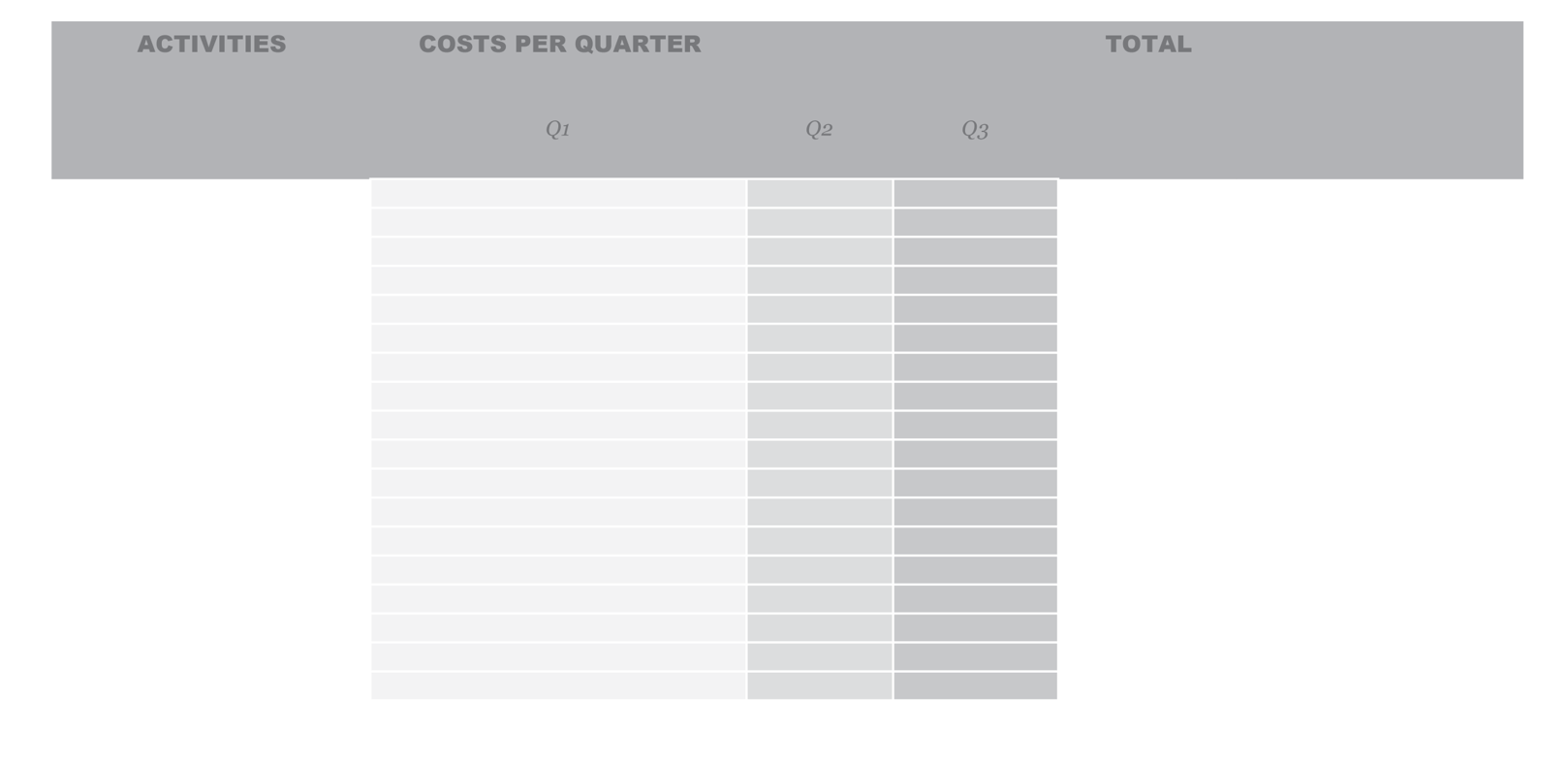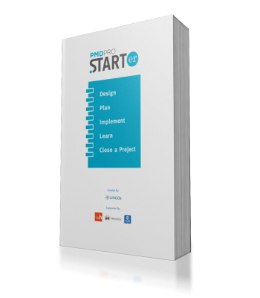Budget
I want to plan a project...
by determining how much money is needed, and when
This tool will enable you to outline your projects estimated cost and the deadlines for each expense.

What is it?
Your budget sets out exactly what your project’s costs will be and when the money is needed.
Your project team will rely on it to plan and manage their work effectively. Your leadership team will use your and other project budgets to keep an eye on overall program expenditures. Finance staff will use it to make sure enough cash is available in the bank account to cover the project’s upcoming expenses. And fundraisers will use it to inform their grant applications.
The design and structure of your budget will vary, depending on the source of project funding and donor guidelines. However, as a rule, it is common practice to identify all accounts – or elements – in a project (with some variance around cost categories).
Our budgeting tool outlines the processes and skills required to budget effectively. These fall into three important categories: developing budgets, identifying cost estimates, and monitoring budget expenditure.
HOW do I use it?
Some of your expenses will be direct costs. For UNITAS, the direct costs of latrine construction could be salaries, cement, equipment or transport.
But don’t stop there. You also need to think about other indirect costs. For UNITAS, these could include resources for communications, risk management, procurement processes, or general overheads.
You may also need to account for the cost of shared services (within your own organization), such as the percentage of time that you need from a driver, finance manager, IT support, media or HR to deliver your project. Don’t neglect this area, or you might find that in-house resources aren’t available when you need them!
Estimating: Choose the right approach. If you are working with individuals who have previous experience of similar projects, you could use a ‘Top Down’ approach, starting with an overview estimate and assigning percentages of this spend to different components.
‘Bottom Up’ estimates tend to involve the project team and people working in the field who estimate the costs of each area of work, rolling these up into an overall cost. These tend to involve a larger number of people, and outputs are often more accurate. Time considerations will often dictate which approach to follow.
Budget development: You have thought through all eventualities and have applied a cost to them. Now it’s time to log this detail. Your Finance Manager can help you to set your project budget.
Your organization may have its own financial reporting systems, but as a rule these will enable you to issue regular checks, report on variances, manage your cash balance, authorize expenditure, and implement purchasing policies with confidence.
Budget spreadsheets should enable you to provide account codes, donor codes and unit costs for each of the project areas. Once set, you are accountable for ensuring that budget spending remains on track, and within project scope.
Monitoring: You need to keep track of your budget. If you find that actual expenditure is exceeding cost estimates, then you will know that the project is unlikely to deliver the complete project scope. You will then need to re-plan some of the work to find more efficient ways of implementing remaining activities.
WHEN do I use it?
You set your budget before the project starts, moving quickly to apply cost estimates for all project activities. Once established, your budget is a live spreadsheet that is monitored and reported on throughout the lifecycle of a project.
Who is involved?
Tips:
Additional Resources

Supported & Developed by:
Shared by:
Users are free to copy/redistribute and adapt/transform
for non-commercial purposes.
© 2022 All rights reserved.




